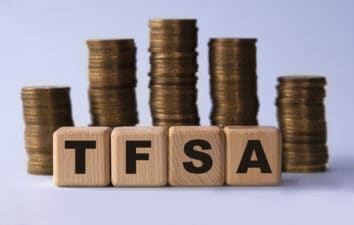Earning $1,000 a month in passive income may not set you up for early retirement, but it could significantly enhance your quality of life. This amount can cover a substantial portion of your monthly expenses, such as rent or groceries, or even fund a weekend getaway.
So, what does it take to achieve this level of passive income? The answer varies. While it’s possible to rely on a single dividend stock offering an 8% yield, this approach comes with higher risk due to the lack of diversification. A more balanced and safer strategy would involve investing in an exchange-traded fund (ETF), particularly one managed with a focus on generating income.
In this context, let’s explore Hamilton Enhanced U.S. Covered Call ETF (TSX:HYLD) as a potential option. This ETF employs a strategy designed to provide investors with a steady income stream, making it an appealing choice for those looking to earn $1,000 monthly through passive means.
How HYLD works
HYLD’s portfolio consists of seven different Hamilton ETFs, each covering broad segments of the U.S. market, including pivotal sectors such as healthcare, technology, and financials. This diversified approach allows HYLD to capture growth across a wide range of industries and sectors.
A key characteristic of HYLD and the ETFs it invests in is their use of covered calls. This strategy involves selling call options on stocks that the fund owns. In essence, a covered call ETF agrees to sell its stock at a predetermined price in the future in exchange for receiving a premium today.
This transforms potential future price appreciation into immediate income, which can enhance the fund’s yield but at the cost of capping the upside potential if the market rises significantly.
Further amplifying its ability to generate income, HYLD employs a 25% leverage strategy. This means the fund aims to enhance returns and yield by borrowing funds to invest an additional 25% over its capital base, effectively operating at 1.25 times the investment exposure.
While this approach can lead to higher returns and a more attractive yield, it also introduces greater volatility and risk, as both gains and losses are magnified.
HYLD distributes its income on a monthly basis, making it an attractive option for investors seeking regular income streams. As of March 11, the ETF boasts an impressive annual yield of 12.07%.
How much HYLD do you need to get $1,000 monthly?
Assuming HYLD’s most recent March 7th monthly distribution of $0.131 per share and the current share price at the time of writing of $13.14 remained consistent moving forward, an investor looking for $1,000 of monthly income would need to buy this much HYLD:
| COMPANY | RECENT PRICE | NUMBER OF SHARES | DIVIDEND | TOTAL PAYOUT | FREQUENCY |
| HYLD | $13.14 | 7,634 | $0.131 | $1,000.05 | Monthly |
7,634 shares of HYLD at its current price of $13.14 per share works out to an investment of $100,310.76. Keep in mind that to receive the full payout, you’ll need to hold this inside of a TFSA to eliminate taxes.








